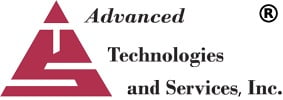The fourth quarter's contribution factor has been announced by the FCC to be the highest ever at 34.5 percent. How exactly does that affect your Universal Service Fund (USF) fees for this quarter? This post will dive into case examples to demonstrate the potential cost savings achievable through traffic studies.
USF Study Example for Small to Mid-Sized Providers
Using Safe Harbor Rate
For this first example, let's use an example of a smaller-sized VoIP provider with a yearly revenue of $100,000. It’s time to file their 499s, and they opt to use the Safe Harbor rate which is 64.9% for VoIP (37.1% for wireless).
Their annual contribution to the Universal Service Fund is calculated by multiplying the following factors:
- Yearly Revenue: $100,000
- Percent of Interstate Usage (Safe Harbor): 64.9%
- Quarterly Contribution Factor: 34.5%
- Total Contribution: $22,391
For a provider with $100,000 in revenue, a USF contribution of $22,391 represents a significant portion of their income.
One of the best ways for this provider to lower their USF fees would be to perform a traffic study in order to determine their actual Percentage of Interstate Usage (PIU).
Using a Traffic Study
Let's try that example again, except this time instead of using the safe harbor rate, they've performed a traffic study and found their actual PIU to be 28.5% - which is a common average we tend to see with traffic studies.
- Yearly Revenue: $100,000
- Percent of Interstate Usage (With a Traffic Study): 28.5%
- Quarterly Contribution Factor: 34.5%
- Total Contribution: $9,833
After a traffic study, this provider's yearly contribution would now decrease to $9,833. However, since their contribution is under $10,000, the FCC would consider them as ‘de minimis’, and this provider would not need to contribute anything to the Universal Service Fund.
With a traffic study, their USF Contribution went from $22,391 - to zero.
We work with many providers in situations similar to the example above who use traffic studies to become de minimis or stay de minimis for longer.
USF Study Example For Larger Providers
Larger companies are also able to minimize their customers' tax burden by completing traffic studies. Let’s look at the same example as above, except this time with a mid-sized VoIP company with an annual revenue of $1 million.
Using Safe Harbor Rate
- Yearly Revenue: $1,000,000
- Percent of Interstate Usage (Safe Harbor): 64.9%
- Quarterly Contribution Factor: 34.5%
- Total Contribution: $223,905
Let's do that example again, this time with a hypothetical PIU of 29.7%, which was found through a traffic study.
Using a Traffic Study
- Yearly Revenue: $1,000,000
- Percent of Interstate Usage (Actual): 29.7%
- Quarterly Contribution Factor: 34.5%
- Total Contribution: $102,465
After finding their actual PIU with a traffic study, this company would have only had to pay $102,465 annually, instead of $223,905 with the Safe Harbor rate. This results in a 54.2% reduction in their contribution, leading to a total savings of $121,440 for the provider and their customers
The examples above are not exaggerated and are representative of the typical savings we see in traffic studies performed for our clients.
According to Universal Service Administrative Company (USAC), the best time to switch from using Safe Harbor to a traffic study is with the November 499-Q filing, which keeps the methodology consistent throughout the year and simplifies the true-up process.
Contact us to get started with a free sample traffic study on a subset of your data. ATS has dozens of traffic studies under our belt and we're happy to help providers minimize their USF tax burden.
